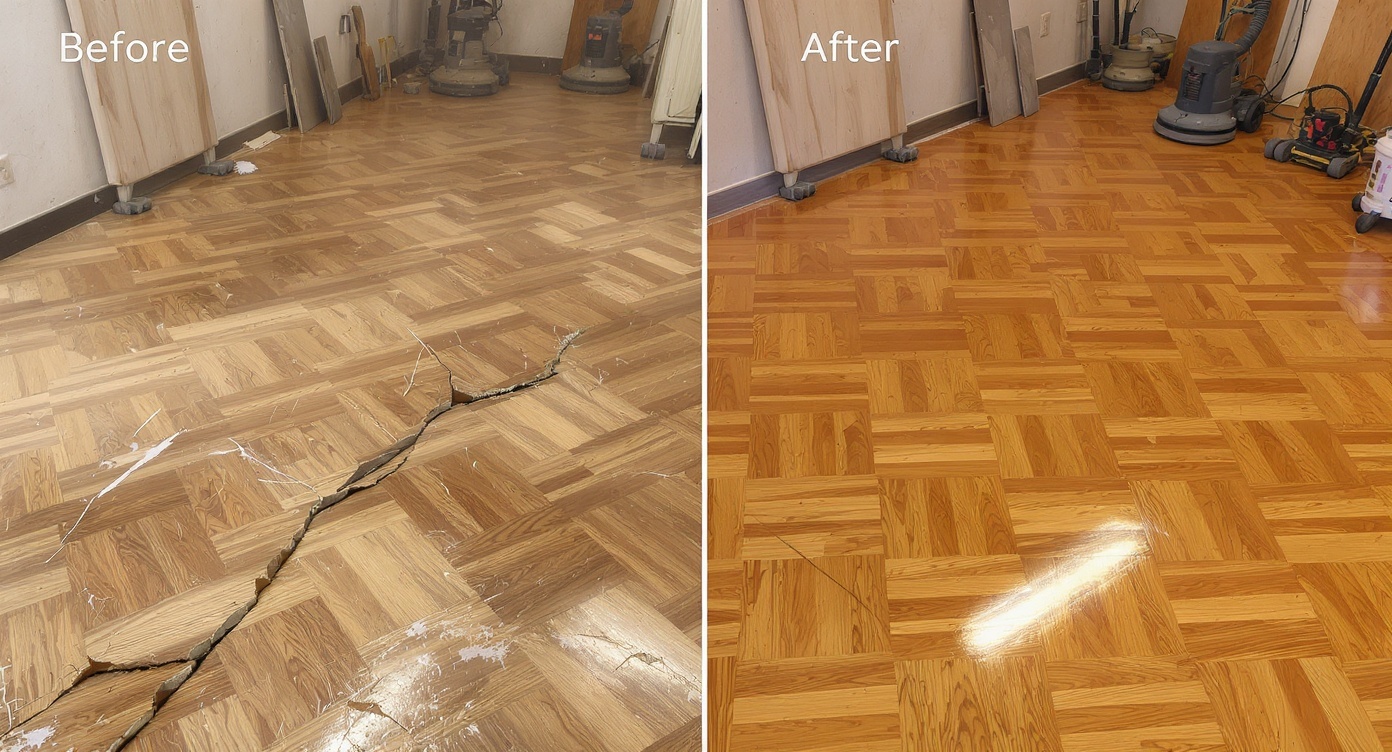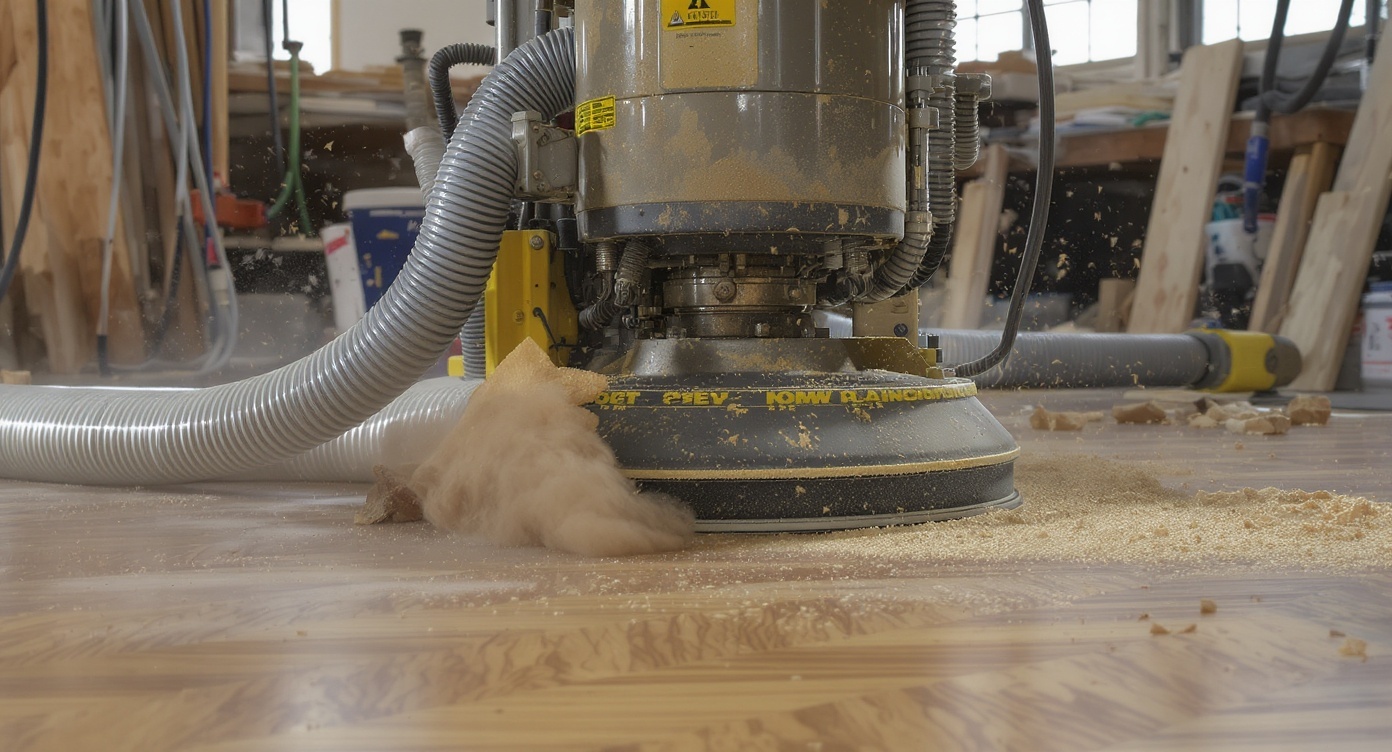Parquet Floor Restoration: Complete Guide to Sanding, Refinishing and Modern Renovation Techniques
The art of restoring parquet flooring represents one of the most rewarding challenges in contemporary floor renovation, combining traditional craftsmanship with modern technological innovations. Professional parquet restoration transforms deteriorated wooden surfaces into spectacular displays of natural beauty while preserving the architectural heritage and investment value of quality hardwood installations.

Understanding the fundamental principles behind parquet restoration enables property owners to make informed decisions about renovation approaches, timing, and investment levels. The restoration process encompasses multiple sophisticated techniques ranging from traditional hand-sanding methods to advanced chemical refinishing systems that can dramatically extend the operational lifespan of wooden flooring installations.
Assessment and Diagnostic Analysis
Comprehensive parquet restoration begins with thorough diagnostic evaluation that determines the optimal restoration approach based on wood condition, structural integrity, and aesthetic requirements. Professional assessment examines surface wear patterns, moisture damage indicators, structural movement signs, and finish deterioration levels to establish restoration feasibility and methodology.
The diagnostic process reveals critical factors that influence restoration success including wood species characteristics, original installation methods, previous maintenance history, and environmental exposure conditions. Different parquet patterns such as herringbone, chevron, and basket weave configurations require specialized restoration approaches that account for grain direction variations and expansion joint considerations.
Moisture content analysis represents a crucial diagnostic component because excessive moisture levels can compromise restoration outcomes and lead to subsequent structural problems. Professional-grade moisture meters provide precise readings that guide preparation requirements and determine appropriate drying periods before restoration work can commence safely.
Surface hardness testing evaluates wood condition and determines the depth of material removal required during the restoration process. Softened areas indicate moisture damage or structural deterioration that may require localized repairs or replacement before comprehensive restoration can proceed effectively.
Traditional Sanding and Refinishing Methods
Professional sanding operations form the foundation of successful parquet restoration through systematic material removal that eliminates surface defects while revealing fresh wood fiber beneath damaged layers. The sophisticated sanding process employs progressively finer abrasive grits that gradually smooth surface irregularities and prepare the wood substrate for finish application.

Coarse grit sanding using 40 to 60-grit abrasives removes damaged surface material, old finish residues, and significant wear patterns that compromise visual appearance. This aggressive material removal phase requires careful technique to avoid over-sanding that could weaken individual parquet pieces or create uneven surface profiles across the installation.
Medium grit progression from 80 to 100-grit materials smooths coarse sanding marks while maintaining efficient material removal rates. This intermediate phase establishes uniform surface texture and removes scratches created during initial rough sanding operations.
Fine grit finishing employs 120 to 150-grit abrasives that create smooth surfaces suitable for finish application. The final sanding phase eliminates residual scratch patterns and establishes consistent surface porosity that promotes optimal finish adhesion and appearance quality.
Professional sanding equipment selection significantly influences restoration outcomes through dust control capabilities, material removal efficiency, and surface quality achievement. Drum sanders provide aggressive material removal for severely damaged installations, while orbital sanders offer superior surface smoothness for finish-ready preparation.
| Sanding Stage | Grit Range | Material Removal | Surface Objective |
| Coarse Preparation | 40-60 | 2-4mm | Damage elimination |
| Medium Smoothing | 80-100 | 1-2mm | Scratch removal |
| Fine Finishing | 120-150 | 0.5-1mm | Finish preparation |
Advanced Restoration Technologies
Contemporary parquet restoration incorporates innovative technologies that enhance traditional methods while reducing labor requirements and improving final results. Chemical stripping systems utilize specialized formulations that dissolve old finishes without mechanical abrasion, preserving maximum wood thickness while achieving superior cleaning effectiveness.
Dustless sanding systems integrate powerful vacuum collection mechanisms that capture airborne particles at the point of generation, creating cleaner working conditions while protecting surrounding areas from contamination. These advanced systems enable restoration work in occupied buildings while maintaining acceptable indoor air quality standards.
Water-based finishing products represent significant advancement in parquet restoration through reduced volatile organic compound emissions, faster cure times, and enhanced durability characteristics. Modern water-based polyurethanes provide exceptional wear resistance while maintaining natural wood appearance without the amber coloration associated with traditional oil-based finishes.
UV-cured finishing systems offer revolutionary restoration capabilities through instant curing mechanisms that eliminate traditional drying periods. These specialized systems enable same-day completion of restoration projects while providing superior durability and chemical resistance characteristics.
Oil-based penetrating finishes create deep wood protection through fiber saturation that enhances natural grain patterns while providing excellent durability. These traditional finishing approaches require longer cure times but offer superior repairability and maintenance flexibility compared to surface film finishes.
Specialized Repair Techniques
Successful parquet restoration often requires sophisticated repair methods that address localized damage while maintaining overall installation integrity. Wood weaving techniques replace severely damaged parquet pieces through precise cutting and fitting operations that preserve pattern continuity and structural stability.
Crack repair procedures utilize specialized wood fillers and adhesives that restore structural integrity while matching original wood coloration and grain characteristics. Professional repair materials provide permanent solutions that withstand normal expansion and contraction cycles without visible separation or color variation.
Board replacement techniques address irreparable damage through selective removal and installation of matching parquet pieces. This precision work requires expert craftsmanship to maintain pattern alignment and achieve seamless integration with existing installation areas.
Gap filling operations address separation between parquet pieces using flexible compounds that accommodate seasonal movement while preventing debris accumulation. Professional gap filling materials maintain elasticity throughout temperature and humidity variations that naturally affect wooden flooring installations.
| Damage Type | Repair Method | Material Requirements | Expected Lifespan |
| Surface Scratches | Sanding/Refinishing | Abrasives, finish | 15-20 years |
| Deep Gouges | Wood Filler/Sanding | Filler, stain, finish | 10-15 years |
| Loose Pieces | Re-adhesion | Adhesive, clamps | 20+ years |
| Damaged Boards | Replacement | Matching wood, installation | Original lifespan |
Modern Maintenance-Free Solutions
Contemporary restoration approaches emphasize long-term maintenance reduction through advanced surface treatments and protective systems that minimize future restoration requirements. Aluminum oxide finishes provide exceptional durability through ceramic particle integration that creates scratch-resistant surfaces capable of withstanding heavy commercial traffic.
Nano-technology coatings offer revolutionary protection through molecular-level surface modification that repels moisture, stains, and wear-causing contaminants. These invisible protective layers maintain natural wood appearance while providing superior performance characteristics that extend maintenance intervals significantly.
Self-healing finish formulations incorporate advanced polymer chemistry that enables minor scratch repair through heat activation mechanisms. These innovative systems restore surface integrity automatically without professional intervention, dramatically reducing long-term maintenance costs.
Antimicrobial surface treatments provide additional protection in healthcare and food service applications through pathogen resistance that maintains hygienic conditions. These specialized coatings integrate seamlessly with traditional finish systems while providing enhanced safety characteristics.
Economic Analysis and Project Planning
Professional parquet restoration provides exceptional return on investment compared to complete floor replacement through material cost savings, reduced installation time, and preservation of existing subfloor infrastructure. Comprehensive economic analysis demonstrates that restoration typically costs 40 to 60 percent less than new installation while achieving comparable aesthetic and performance results.
Project timeline considerations encompass preparation requirements, material curing periods, and environmental conditions that influence completion schedules. Professional restoration projects typically require three to five working days for average residential installations, depending on repair requirements and finish selection.
Environmental benefits of restoration include reduced material consumption, lower transportation impacts, and preservation of embodied energy in existing wooden materials. These sustainability advantages align with contemporary environmental awareness while providing cost-effective renovation solutions.
Quality assurance protocols ensure restoration success through systematic inspection procedures, performance testing, and warranty coverage that protects investment value. Professional restoration services provide comprehensive guarantees covering workmanship quality and material performance for extended periods.
| Project Scale | Restoration Cost | Replacement Cost | Time Savings |
| Residential (500 sq ft) | $2,500-4,000 | $4,500-8,000 | 3-5 days |
| Commercial (2,000 sq ft) | $8,000-15,000 | $18,000-32,000 | 1-2 weeks |
| Historic (1,000 sq ft) | $6,000-12,000 | $15,000-25,000 | 1-2 weeks |
The sophisticated nature of contemporary parquet restoration combines traditional woodworking skills with advanced material science to achieve exceptional results that preserve architectural heritage while meeting modern performance expectations. Professional restoration services provide comprehensive solutions that address both aesthetic and functional requirements while delivering superior long-term value compared to replacement alternatives.
Success in parquet restoration depends on thorough assessment, appropriate technology selection, and expert execution that respects the unique characteristics of each installation. The investment in quality restoration work provides decades of enhanced performance while maintaining the timeless beauty that makes parquet flooring a preferred choice in distinguished architectural applications.
 strata-floor.com
strata-floor.com